Mudéjar Architecture of Aragon
By Jamie
What is the Mudéjar Architecture of Aragon?
The Mudéjar architecture of Aragon UNESCO site is in a cluster of towns in Northern Spain that are home to a unique style of architecture. Mudéjar emerged in Spain in the Middle Ages after the Reconquista of the 11th-13th century. The Reconquista was the period when the Christian kingdoms gradually reclaimed Spain from the Muslims who had conquered it in the 8th century. Mudéjar architecture fuses together Islamic and Christian artistic traditions. It’s a stunning, distinctive style and particularly well-preserved in the region of Aragon.
The style encompasses a lot of things, but the most notable is the use of geometric shapes and colourful ceramic tiles. Mudéjar buildings may also include horseshoe arches or large towers, inspired by minarets from the Moorish period.
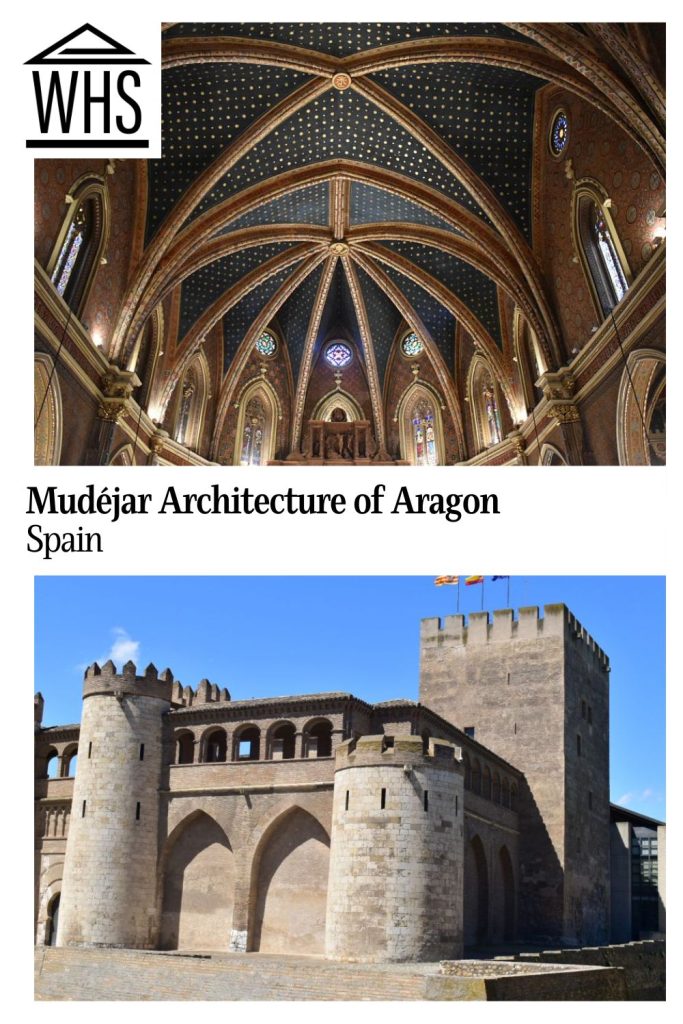
Disclosure: This article contains affiliate links. Making a purchase through an affiliate link will mean a small commission for this website. This will not affect your price. Privacy policy.
Aside from its beauty, the Mudéjar architecture of Aragon is especially important because of the period of history it comes from: a time specific to Spain, in the years after the Reconquista when Islamic traditions and culture were still ever-present in Spanish life.
More than this, according to UNESCO, the heritage is worth protecting because it comes from the rarest of things – a period of coexistence. During this short window, Islamic, Jewish and Christian cultures existed together peacefully.
This shouldn’t be overly romanticised, though. Even during this golden era, communities weren’t equal and there were periods of oppression. And after the Reconquista, a tragic era of violent repression began, resulting in the expulsion of Jews and Muslims from the country and the beginning of the Spanish Inquisition. The Mudéjar architecture of Aragon stands testament to this history, to the period when Spain was a melting point of culture and artistic styles.
Though the style can be found all over Spain (for example, there are excellent examples in the towns and cities of Andalucía), Aragon is especially important for the large concentration of impressive, well-preserved and historic examples of Mudéjar architecture. The World Heritage site includes 10 buildings across the region, mostly in the cities of Teruel (four buildings) and Zaragoza (three buildings).
Why is the Mudéjar Architecture of Aragon a UNESCO World Heritage site?
These Mudéjar buildings are a UNESCO site because of their exceptional artistic and historical value, blending together Islamic and Christian styles. The style brings together geometric shapes, intricate Islamic-style brickworks and tiles, and wooden coffered ceilings, often utilised in traditional Christian structures, such as churches and cathedrals.
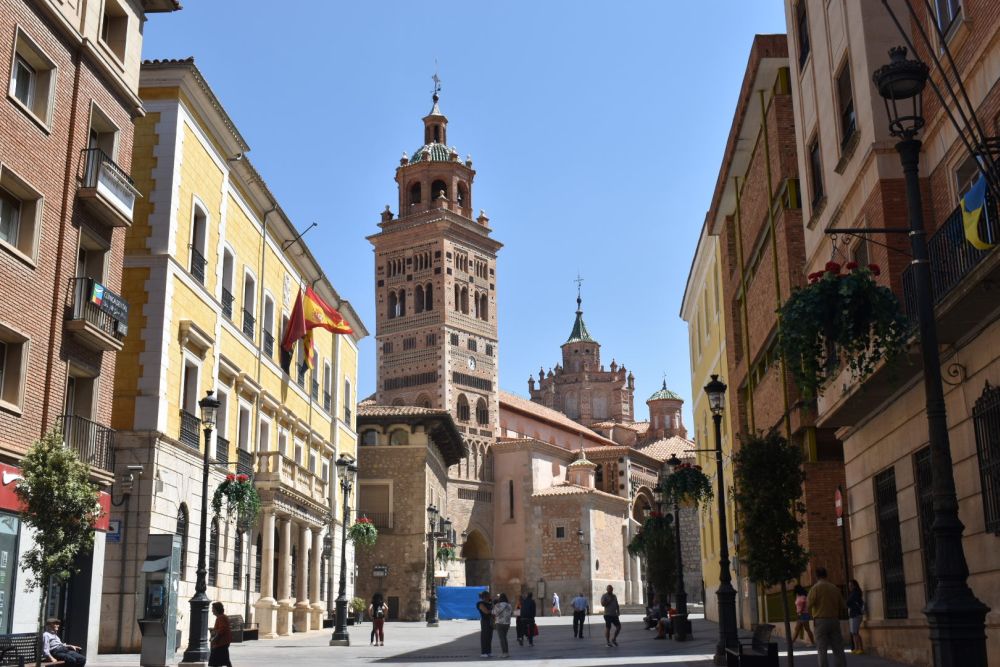
The UNESCO World Heritage website explains: “The Mudéjar architecture of Aragon is, on account of the formal solutions adopted and the techniques and materials of construction employed, a specific and extraordinary legacy, as well as a vivid reflection of a moment in history when three cultures with very different roots flourished together on Aragonese soil.”
What can you expect on a visit to these Mudéjar buildings in Aragon?
For anyone with a love for architecture and history, exploring Aragon’s towns and cities is an utter delight. Mudéjar is the only artistic style entirely unique to Spain, and in places such as Teruel and Zaragoza, there’s an absolute feast of it. The buildings are found over a large area, so make sure to plan out what you want to see. The two main cities are Zaragoza and Teruel.
Zaragoza: Aragon’s largest city
Zaragoza is a great starting point. The capital of the region, it’s the easiest city to reach and provides a gateway to the rest of the region. Most famous among its Mudéjar buildings is the Aljafería Palace, originally an Islamic fortress that was later expanded with breathtaking Mudéjar-style halls and coffered ceilings by the Catholic monarchs. It’s arguably the region’s crown jewel, and one of the most important buildings in all of Northern Spain.
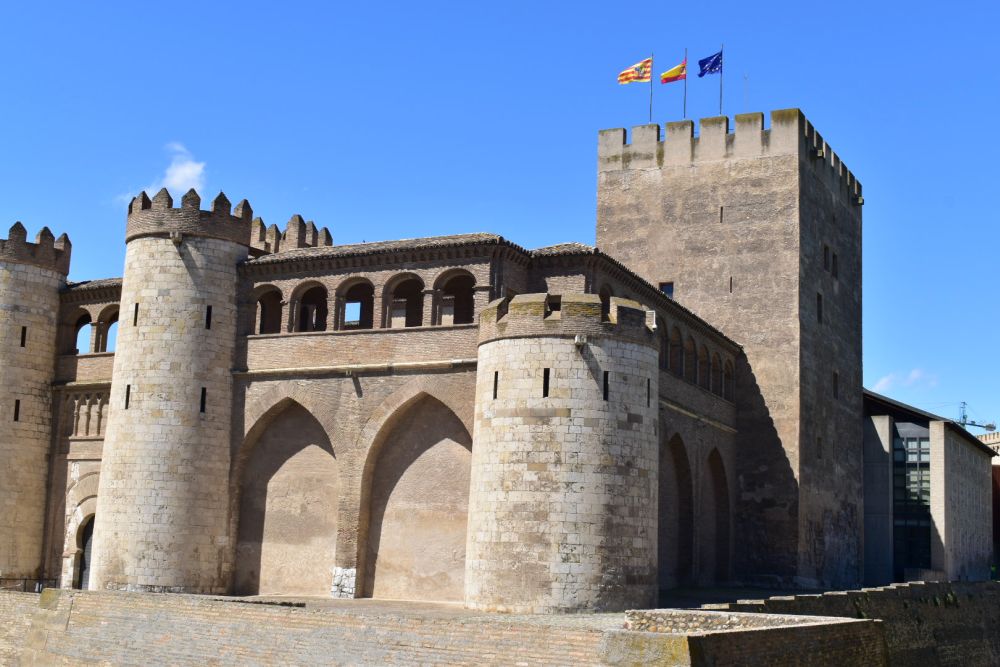
The other key Mudéjar attraction in Zaragoza is La Seo Cathedral, one of two cathedrals in the city. It was built in the 12th century, over the top of the historic mosque. Particularly notable are the Mudéjar ceramics on its exterior wall.
The 14th-century Church of San Pablo, with a gorgeous Mudéjar tower, is the third and final building that is part of the World Heritage site in Zaragoza.
Find accommodations in Zaragoza.
Book a private walking tour of Zaragoza.
Teruel: Spain’s Mudéjar capital
To really experience Aragonese Mudéjar architecture, you need to visit Teruel. I hadn’t heard of the style and knew nothing about the region when I first visited. I left the city in love with both.
Teruel is one of Spain’s most underrated cities. It’s only a small place, but it has more of the buildings that make up the World Heritage site of Aragonese Mudéjar than anywhere else. Spending just a day exploring its medieval streets, you’ll discover many of the finest Mudéjar buildings in Spain.
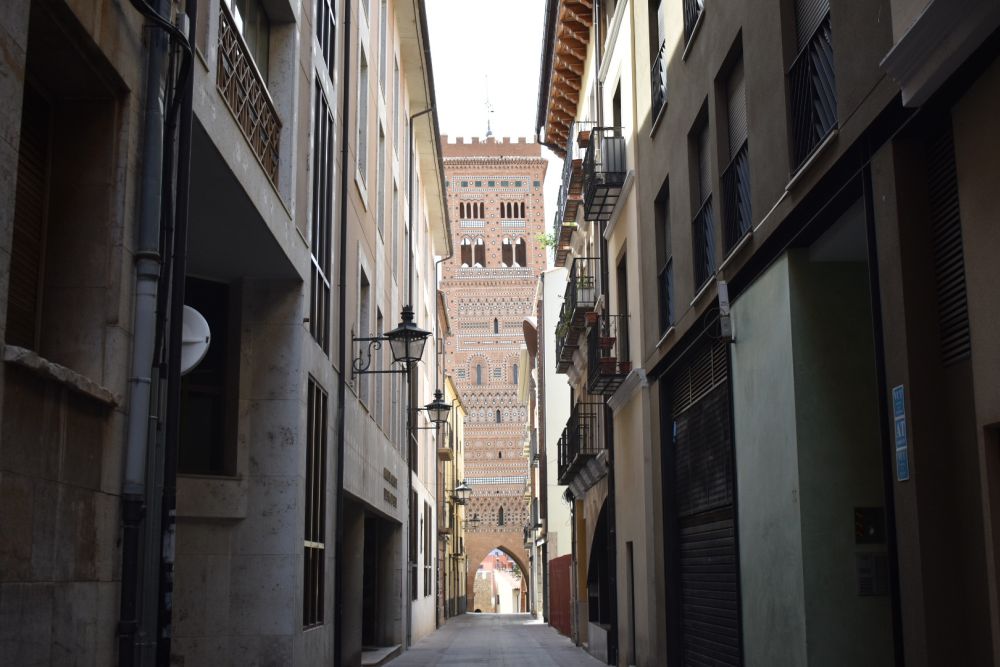
The four sites that are part of the UNESCO World Heritage sites are:
- Teruel Cathedral – Famous for its coffered Mudéjar ceiling, known as the ‘Sistine Chapel’ of the style.
- The two towers of Teruel – The Tower of San Martín and the Tower of San Salvador. Together they are the city’s most iconic buildings: two almost identical medieval towers covered in intricate green and white tiles.
- San Pedro Church – A 14th-century Mudéjar church.
If you arrive by train, your first introduction to the city will be the Escalinata. Though not part of the World Heritage site, this staircase was built in the 20th century as a homage to the heritage of Mudéjar in the region. It’s one of the most beautiful walks from a train station to a city centre that I’ve experienced!
Book a group walking tour of Teruel, or a night-time heritage and history walking tour.
Beyond the cities
Outside of Teruel and Zaragoza, there are three sites that complete the official World Heritage list:
- Colegiata de Santa Maria la Mayor in Calatayud, particularly notable for its 70-meter-tall (230 feet) Mudéjar-gothic tower, which looms over the town. Calatayud is just a 25-minute train ride from Zaragoza.
- The Church of San Tecla in Cervera de la Cañada: a fortified church built in the Mudéjar style between the 14th-17th centuries. It’s in the tiny village of Cervera de la Cañada, about an hour’s drive from Zaragoza. You need a car to get there.
- The Church of Santa María in Tobed: another fortified church in a small village. It has beautiful, intricate, geometric motifs on its brick walls, and a minaret-style bell tower.
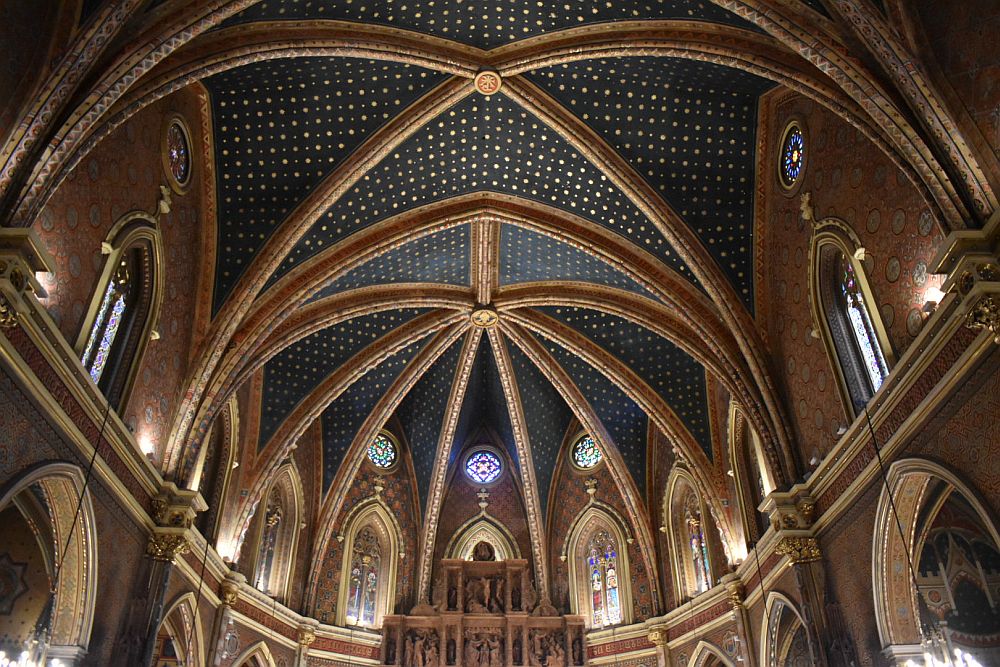
Is the Mudéjar Architecture of Aragon worth visiting?
For lovers of architecture and history, the Mudéjar architecture of Aragon is a unique and magical experience. Not just because of the beauty of the buildings, but because of the historic era they represent, and the often forgotten history of Muslim Spain you can learn about by visiting them.
I’d also recommend visiting for anyone who loves Spain, but wants to get off the beaten track a bit. Zaragoza is a lively, wonderful city, with plenty to do and see, but barely a fraction of the tourists seen in Spain’s other big cities. Teruel meanwhile is a small place, but provides an insight into an authentic part of Spain, again often overlooked by tourists.
That being said, if you’ve never been to Spain before, there are other sites I’d recommend first. Seville, for example, is one of Spain’s most magical cities and there, too, you can find excellent examples of Mudéjar architecture – such as in the rooms of the Alcazar, also a World Heritage site.
What sorts of travelers would like the Mudéjar Architecture of Aragon?
Those with an interest in architecture and history will find plenty to enjoy exploring the Mudéjar sites of Aragon. I’d also recommend it for travellers who love getting off the tourist trail and discovering hidden gems. Exploring the cities of Teruel and Zaragoza is an excellent way to see a different, more authentic side to Spain. It’s also home to Aragonese cuisine – with plenty of fresh regional specialities to enjoy after a day of sightseeing!

Tips for visiting the Mudéjar Architecture of Aragon
If it’s Mudéjar architecture you’re most interested in, prioritise Teruel. It has the highest concentration in one place. But if you have more of a passing interest, I’d suggest focusing on Zaragoza. It’s the biggest city in the area, and beyond its architecture it has more things to see and do.
Find accommodations in Zaragoza or Teruel.
If you really want to discover everything Aragonese Mudéjar has to offer, I’d suggest renting a car. Two of the sites – those in Tobed and Cervera de la Canada – are in tiny villages (both home to around 200 people), and although they’re relatively close to Zaragoza (about an hour’s drive), a car is the only way.
A car would also allow you to see the Mudéjar architecture across Aragon that isn’t yet part of the UNESCO World Heritage list, such as the tower of the Church of Santa María. Found in the town of Utebo, the church’s tower is made up of thousands of ceramic tiles. Despite not being part of the UNESCO World Heritage site, it is in my opinion one of the most beautiful buildings in the region.
You might also want to visit other nearby UNESCO sites: the Walled Town of Cuenca or La Lonja de la Seda in Valencia.
Where are the Mudéjar sites?
The Mudéjar sites are scattered across Aragon, a region in northeastern Spain. Most are found in the two major cities – Zaragoza and Teruel.
I’d suggest using Zaragoza as a base. It has its own international airport, and is also easy to reach from many other places in Spain by public transport. For example, you can get a train to Barcelona in an hour and a half. It’s better to use public transport than to drive – Spain’s railway system is fast and easy. The drive, on the other hand from Zaragoza to Barcelona is more than twice as long – three and a half hours!
Teruel is less well connected, but can be reached by train from Zaragoza (about two and a half hours) or by car (three hours).
For more information about the various Mudéjar sites that make up the World Heritage site, such as admission prices and opening times, visit Aragon’s official tourism website here.
Have you been to any of the Mudéjar sites in Aragon? If so, do you have any additional information or advice about this UNESCO World Heritage site? Please add your comments below!

